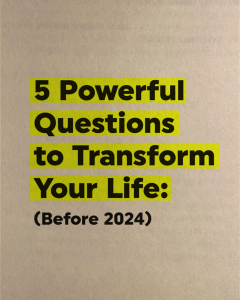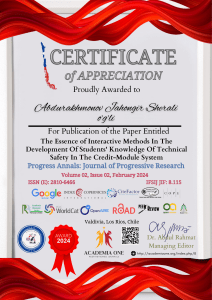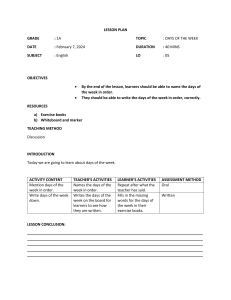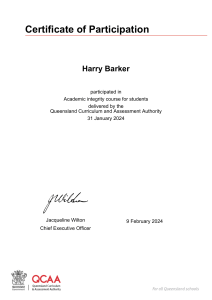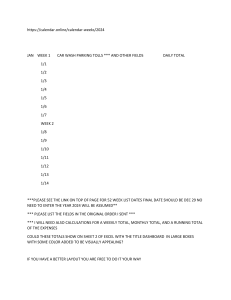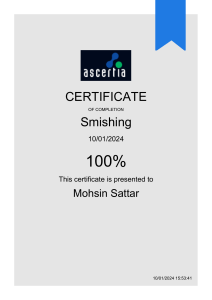Multi-Media Integrated Instruction Among Learners in Inclusive Classroom Setting
advertisement
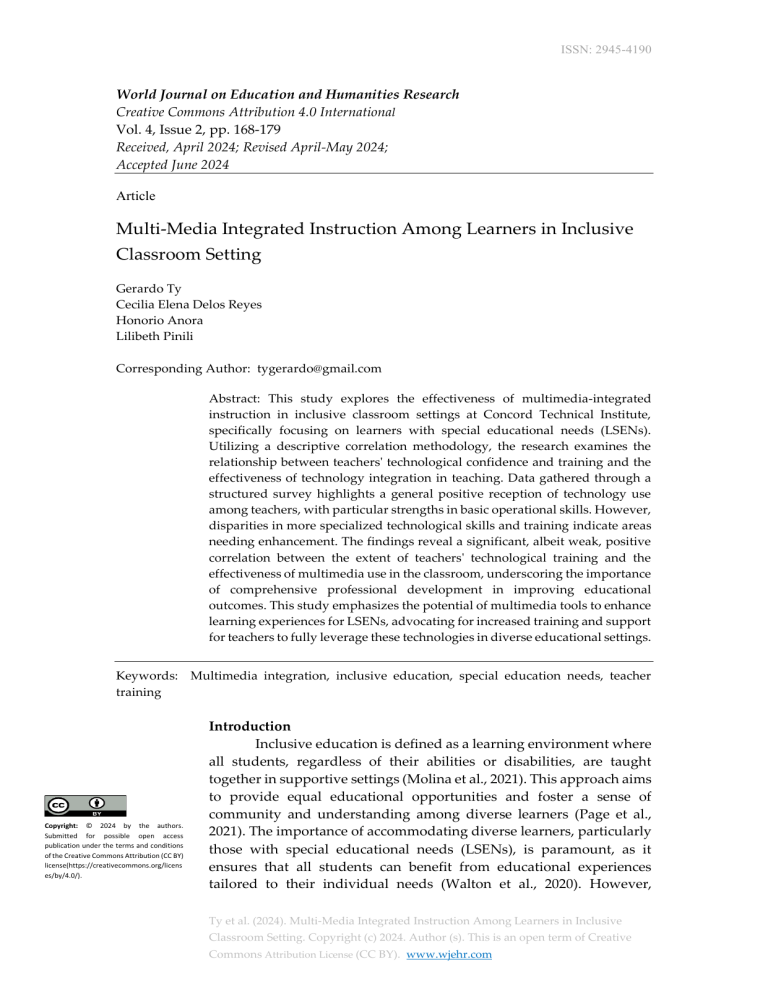
ISSN: 2945-4190 World Journal on Education and Humanities Research Creative Commons Attribution 4.0 International Vol. 4, Issue 2, pp. 168-179 Received, April 2024; Revised April-May 2024; Accepted June 2024 Article Multi-Media Integrated Instruction Among Learners in Inclusive Classroom Setting Gerardo Ty Cecilia Elena Delos Reyes Honorio Anora Lilibeth Pinili Corresponding Author: tygerardo@gmail.com Abstract: This study explores the effectiveness of multimedia-integrated instruction in inclusive classroom settings at Concord Technical Institute, specifically focusing on learners with special educational needs (LSENs). Utilizing a descriptive correlation methodology, the research examines the relationship between teachers' technological confidence and training and the effectiveness of technology integration in teaching. Data gathered through a structured survey highlights a general positive reception of technology use among teachers, with particular strengths in basic operational skills. However, disparities in more specialized technological skills and training indicate areas needing enhancement. The findings reveal a significant, albeit weak, positive correlation between the extent of teachers' technological training and the effectiveness of multimedia use in the classroom, underscoring the importance of comprehensive professional development in improving educational outcomes. This study emphasizes the potential of multimedia tools to enhance learning experiences for LSENs, advocating for increased training and support for teachers to fully leverage these technologies in diverse educational settings. Keywords: Multimedia integration, inclusive education, special education needs, teacher training Copyright: © 2024 by the authors. Submitted for possible open access publication under the terms and conditions of the Creative Commons Attribution (CC BY) license(https://creativecommons.org/licens es/by/4.0/). Introduction Inclusive education is defined as a learning environment where all students, regardless of their abilities or disabilities, are taught together in supportive settings (Molina et al., 2021). This approach aims to provide equal educational opportunities and foster a sense of community and understanding among diverse learners (Page et al., 2021). The importance of accommodating diverse learners, particularly those with special educational needs (LSENs), is paramount, as it ensures that all students can benefit from educational experiences tailored to their individual needs (Walton et al., 2020). However, Ty et al. (2024). Multi-Media Integrated Instruction Among Learners in Inclusive Classroom Setting. Copyright (c) 2024. Author (s). This is an open term of Creative Commons Attribution License (CC BY). www.wjehr.com ISSN: 2945-4190 teaching in such diverse settings presents numerous challenges. Educators must address a wide range of learning styles and needs, which can be daunting without the appropriate resources and strategies (Nilholm, 2021; Sanger, 2020). Specifically, engaging learners with special educational needs effectively requires innovative teaching approaches and tools that can adapt to varying disabilities and learning paces (Thompson & Rodriguez, 2021). The integration of multimedia technologies in inclusive classroom settings has garnered significant attention due to its potential to enhance learning experiences for students with special educational needs (LSENs) (Badilla-Quintana et al., 2020). This approach aligns with recent trends in educational technology, emphasizing interactive and multimedia elements to facilitate learning (Xu & Patnao, 2023). Despite the potential benefits, there remain gaps in understanding how teachers' technological confidence and training impact the effective integration of these tools (Cranmer, 2020). Areas such as basic computer skills, internet search/distance learning skills, software productivity skills, and the extent of professional training require further exploration to optimize educational outcomes for LSENs (Atchley et al., 2020). Moreover, multimedia technologies, such as interactive videos, animations, and digital simulations, offer promising solutions in this context (Abdulrahaman et al., 2020). These tools can aid learning by engaging multiple senses and providing dynamic and interactive content that can be adjusted to individual learning speeds and styles (El-Sabagh, 2021; Asad et al., 2021). Leveraging multimedia, teachers can create more engaging and accessible learning experiences for all students (Baker & Smith, 2020). Additionally, the potential benefits of multimedia tools are particularly significant for LSENs in inclusive classrooms (Badilla-Quintana et al., 2020). Multimedia can help bridge learning gaps by providing alternative ways to understand complex concepts and by enhancing engagement and motivation (Olufunke et al., 2022). There are numerous examples where the integration of multimedia has led to improved learning outcomes for students with special needs, demonstrating its effectiveness in supporting diverse learning processes. Despite these advancements, research gaps remain, particularly in understanding the comprehensive impact of multimedia-integrated instruction in inclusive settings. This study focuses on evaluating the effectiveness of multimedia tools and the extent of technology utilization in teaching LSENs. Key areas of investigation include assessing teachers' technological confidence and training in basic computer skills, internet search/distance learning abilities, software productivity, and their overall training in multimedia tools. Additionally, the study seeks to gauge the perceived effectiveness of multimedia integration in teaching LSENs as reported by educators (Xu & Patnao, 2023). Identifying and exploring these gaps, this research aims to provide insights that can guide future educational practices and Ty et al. (2024). Multi-Media Integrated Instruction Among Learners in Inclusive Classroom Setting. Copyright (c) 2024. Author (s). This is an open term of Creative Commons Attribution License (CC BY). www.wjehr.com ISSN: 2945-4190 policy making in inclusive education. The findings are expected to contribute to a deeper understanding of the role of multimedia in enhancing teaching effectiveness in diverse classrooms, ultimately leading to more refined and effective educational strategies for all learners. Methodology The methodology of this study involved a descriptive correlation approach to examine the effectiveness of multimedia-integrated instruction by regular teachers in an inclusive classroom setting. Utilizing the Input-Process-Output model, the research focused on gathering and analyzing numerical data to identify trends, test hypotheses, and infer causality, which could be generalized to a broader population (Bhandari, 2022). To comply with health safety protocols during the Covid-19 pandemic, the survey was conducted digitally using Google Forms, targeting 25 regular teachers from grades 7 to 12 at Concord Technical Institute. The questionnaire used for data collection was adapted and modified from previous studies by M. Matulac (2013), Fosiah Mahmood (2014), and Ronald N. Llerin (2019), ensuring relevance and comprehensiveness in addressing technological integration in education. The survey was structured into three parts: the first part collected demographic data; the second assessed teachers’ technological confidence across several skill areas; and the third evaluated the effectiveness of technology use in teaching learners with special educational needs (LSENs). Responses were measured using a 4-point Likert scale, allowing for detailed analysis of both the extent of technology use and its perceived effectiveness in the educational process. Results and Discussion Table 1. Number of hours of technology-related training attended Number of Hours f % 31 and above 5 20.00 26-30 0 0.00 21-25 0 0.00 16-20 2 8.00 11-15 5 20.00 10 and below 13 52.00 Total 25 100.00 Table 1 displays the distribution of hours spent in technology-related training by 25 regular teachers at Concord Technical Institute, who were surveyed regarding their integration of multimedia in an inclusive classroom setting. The data reveals that a significant majority, 52% of the respondents, have attended 10 hours or fewer of technologyTy et al. (2024). Multi-Media Integrated Instruction Among Learners in Inclusive Classroom Setting. Copyright (c) 2024. Author (s). This is an open term of Creative Commons Attribution License (CC BY). www.wjehr.com ISSN: 2945-4190 related training. This suggests a relatively low level of exposure to formal technological training among the majority of the teachers. Conversely, 20% of the teachers have engaged in a more substantial training regimen, attending 31 hours or more, indicating a smaller group has had extensive training opportunities. Notably, there is a gap in the middle ranges (16-30 hours), where only 8% of respondents fall into the 16–20-hour category and none in the 21–30-hour range, highlighting a polarization in the amount of training received. Such disparities in training durations could impact the effectiveness of multimedia use in the classroom, as those with less training might not feel as confident or be as effective in employing advanced technological tools in their teaching practices. This distribution prompts a deeper examination of how training opportunities are allocated and suggests a potential area for improvement in professional development programs within the institution. Table 2. Technology learning resources in the classroom Technology f Rank Smartphone Laptop Tablet 25 23 2 1 2 3 *Multiple Response Table 2 outlines the prevalence of different technology learning resources available in the classrooms at Concord Technical Institute, as reported by the teachers. Smartphones are the most common technology, available in all classrooms and ranked first, which indicates their universal accessibility and potential ease of integration into teaching practices. Laptops follow closely, present in 23 out of 25 classrooms, suggesting a high but slightly less universal penetration compared to smartphones. Tablets, however, are significantly less common, with only 2 classrooms equipped with this technology, ranking them third. This distribution highlights a distinct preference or availability bias toward more traditional and possibly more versatile devices like smartphones and laptops over tablets. The heavy reliance on smartphones and laptops may reflect their multifunctional capabilities and familiarity among teachers, which can facilitate a wide range of instructional activities. Conversely, the limited presence of tablets could indicate either a lack of resources or a strategic decision based on the specific educational needs and infrastructure of the institution. This variation in technology availability underscores the need to consider how different devices are suited to various teaching tasks and learning environments. Table 3 provides insight into the basic computer skills of teachers at Concord Technical Institute, as evaluated across three different indicators. The aggregate weighted mean (AWM) for these skills stands at 2.97, indicating an overall positive proficiency among the teachers. The highest score, with a weighted mean of 3.40 and a verbal description Ty et al. (2024). Multi-Media Integrated Instruction Among Learners in Inclusive Classroom Setting. Copyright (c) 2024. Author (s). This is an open term of Creative Commons Attribution License (CC BY). www.wjehr.com ISSN: 2945-4190 of "Very Positive," was received for the ability to save and open documents from various storage devices. This suggests a strong foundational skill set in handling basic file management tasks, which is essential for any educational setting that utilizes technology. Table 3. Basic Computer Skills S/ Indicators N I know how to save/open documents to/from a 1 hard disk or other removable storage devices. I am comfortable with things like installing 2 software and changing configuration settings on my computer. I know how to resolve common hardware or 3 software problems, or I can access technical support in case I encounter a problem. Aggregate Weighted Mean WM Verbal Description 3.40 Very Positive 2.84 Positive 2.68 Positive 2.97 Positive However, there is a noticeable decrease in confidence with more technically demanding tasks. The second indicator, which involves comfort with installing software and altering computer settings, received a weighted mean of 2.84, categorized as "Positive." While still favorable, this indicates a slight dip in confidence or capability with tasks that require a deeper understanding of computer operations. The third indicator, relating to troubleshooting common hardware or software issues or accessing technical support, shows a further decrease with a weighted mean of 2.68. Although still positive, it suggests a lower level of self-sufficiency in resolving technical problems among the teachers. This tiered confidence highlights a potential area for professional development, particularly in enhancing the teachers’ technical troubleshooting skills and their comfort with more complex computer operations. Enhancing these skills could lead to more effective and autonomous use of technology in their teaching, reducing downtime and reliance on support services, and ultimately leading to a more robust integration of technology in the classroom. Table 4. Internet search/distance learning skills Indicators I have an email address, and I can open/send file attachments. 2 I am familiar with distance learning etiquette. I know how to surf the internet and navigate web 3 pages (go to next or previous page). I can use web browsers (e.g., Internet Explorer, 4 Google Chrome, Mozilla Firefox) confidently. I know how to resolve common errors while surfing 5 the internet such as “page not found” or “connection timed out.” I am comfortable with things like doing searches, 6 setting bookmarks, and downloading files. I know how to access a distance learning library and 7 other resource databases. I know how to use asynchronous tools (e.g., 8 discussion, boards, chat tools) effectively. Aggregate Weighted Mean 1 WM Verbal Description 3.56 Very Positive 3.48 Very Positive 3.44 Very Positive 3.33 Very Positive 2.88 Positive 3.24 Positive 3.24 Positive 3.24 Positive 3.30 Very Positive Table 4 examines the internet search and distance learning skills of teachers at Concord Technical Institute, offering a detailed breakdown Ty et al. (2024). Multi-Media Integrated Instruction Among Learners in Inclusive Classroom Setting. Copyright (c) 2024. Author (s). This is an open term of Creative Commons Attribution License (CC BY). www.wjehr.com ISSN: 2945-4190 of their competencies with an overall Aggregate Weighted Mean (AWM) of 3.30, labeled as "Very Positive." This suggests that the teachers are generally well-equipped to handle online educational tools and environments. The highest-rated skill, with a weighted mean of 3.56, involves basic email functions, such as opening and sending file attachments. This indicates a strong foundation in essential internet communication, crucial for managing both administrative and instructional tasks online. Close behind, with scores of 3.48 and 3.44 respectively, are familiarity with distance learning etiquette and the ability to navigate web pages effectively. These skills are vital for maintaining professionalism and efficiency in online educational settings, reflecting a high level of adaptation to online teaching modalities. Skills related to more interactive and complex internet uses, such as using web browsers confidently and effectively engaging with asynchronous communication tools like discussion boards and chat tools, also scored well, all above 3.20, emphasizing a robust capability in utilizing these tools for educational purposes. However, there is a noticeable dip to 2.88 for resolving common internet errors like “page not found” or “connection timed out.” While still positive, this lower score suggests a potential area for improvement in troubleshooting, which is important for minimizing disruptions during online learning activities. Overall, the data portrays a faculty that is largely proficient in utilizing internet resources and tools, positioning them well for effective distance learning. The minor gaps identified in troubleshooting could be targeted in future professional development sessions to enhance overall technological fluency. Table 5. Software productivity skills S/ Indicators N I know what PDF files are, and I can download 1 and view them. I am familiar with MS Word and use it 2 comfortably. I am able to have several applications opened at 3 the same time and move between them. I know how to use file compression (WinZip, 4 Rare, etc.). I know how to use spreadsheet applications 5 (MSExcel). I know how to use presentation software 6 applications. Aggregate Weighted Mean WM Verbal Description 3.24 Positive 3.16 Positive 3.20 Positive 2.64 Positive 3.04 Positive 2.68 Positive 2.99 Positive Table 5 details the software productivity skills of teachers at Concord Technical Institute, with an aggregate weighted mean of 2.99, categorizing the overall proficiency as "Positive." This indicates a satisfactory level of competence among teachers in using key software productivity tools, which are essential for both administrative and Ty et al. (2024). Multi-Media Integrated Instruction Among Learners in Inclusive Classroom Setting. Copyright (c) 2024. Author (s). This is an open term of Creative Commons Attribution License (CC BY). www.wjehr.com ISSN: 2945-4190 instructional tasks. The highest scores were reported for basic operations such as knowing what PDF files are and how to download and view them, achieving a weighted mean of 3.24. Similarly, familiarity and comfort with Microsoft Word were also high, with a score of 3.16, reflecting confidence in performing everyday document processing tasks. The ability to multitask with several applications open simultaneously also received a positive response, scoring 3.20, which is crucial for efficient digital workflow in educational settings. However, there are areas where the proficiency levels dip, notably in more specialized tasks. For example, using file compression software like WinZip or RAR scored only 2.64, and knowledge of presentation software applications was at 2.68. These lower scores suggest a need for targeted training in these specific areas to enhance overall software productivity skills. Additionally, proficiency with spreadsheet applications like Microsoft Excel scored 3.04, indicating a moderate level of comfort which could be improved to better support data management and analytical tasks in educational environments. Overall, while the foundational skills are well-established, there is room for improvement in more specialized software applications, which could further enhance the teachers’ efficiency and effectiveness in their roles. Enhancing these skills through professional development could provide significant benefits, especially in leveraging technology to support diverse learning needs and administrative duties. Table 6. Training S/ Indicators N 1 I have training on the use of the internet. 2 I have attended distance learning classes before. 3 I have used a learning management system before. I have the skills to modify and add content and 4 assessment using a distance learning management system. I have attended seminars/ workshops related to 5 distance learning activities. Aggregate Weighted Mean 2.72 3.16 3.20 Verbal Description Positive Positive Positive 3.12 Positive 2.92 Positive 3.02 Positive WM Table 6 reflects the training experiences of teachers at Concord Technical Institute related to various aspects of distance learning and internet use, with an overall Aggregate Weighted Mean (AWM) of 3.02, indicating a generally positive level of training. The data suggests that while teachers possess foundational training, there is variability in their exposure and proficiency across different training aspects. The highest proficiency reported is in using a learning management system (LMS), with a weighted mean of 3.20, indicating that most teachers are comfortable with basic functions of LMSs. This is closely followed by the ability to attend distance learning classes, scoring 3.16, and the skills to modify and add content and assessment using a distance learning Ty et al. (2024). Multi-Media Integrated Instruction Among Learners in Inclusive Classroom Setting. Copyright (c) 2024. Author (s). This is an open term of Creative Commons Attribution License (CC BY). www.wjehr.com ISSN: 2945-4190 management system, which scored 3.12. These skills are crucial for effective online teaching, suggesting that a substantial portion of the teaching staff is equipped to handle and contribute to digital learning environments actively. However, training on the use of the internet, although still rated as positive, received the lowest score of 2.72. This highlights a potential area for improvement, as comprehensive internet skills are essential for navigating the broader spectrum of resources and tools available online efficiently. Similarly, attendance at seminars or workshops related to distance learning activities, which scored 2.92, indicates that while some training has been provided, there may be room for more comprehensive or repeated sessions to ensure all teachers can fully leverage the benefits of distance learning methodologies. Overall, the data suggests that while the teachers at Concord Technical Institute are generally well-prepared for integrating digital tools into their teaching, enhancing training in internet usage and providing more extensive workshops on distance learning could further improve their effectiveness and adaptability in increasingly digital educational environments. Table 7. Level of effectiveness of multi-media-integration in teaching LSENs S/ Verbal Indicators WM N Description Technology allows students to be more creative 1 3.48 Very Effective and imaginative. The use of technology helps students to find 2 3.52 Very Effective related knowledge and information for learning. The use of technology encourages students to 3 3.48 Very Effective communicate more with their classmates. The use of technology increases students’ 4 3.52 Very Effective confidence to participate actively in class. I think students learn more effectively with the 5 3.44 Very Effective use of technology. I think the use of technology helps to broaden 6 3.44 Very Effective students’ knowledge paradigm. I think the use of technology helps to improve 7 students’ ability, specifically in reading, and 3.40 Very Effective writing. The students are more behaved and under control 8 3.32 Very Effective with the use of technology. The use of technology enables students to express 9 3.36 Very Effective their ideas and thoughts better. The use of technology promotes active and 10 engaging lessons for students’ best learning 3.40 Very Effective experience. Aggregate Weighted Mean 3.44 Very Effective Table 7 provides a compelling overview of the perceived effectiveness of multimedia integration in teaching learners with special educational needs (LSENs) at Concord Technical Institute. The table, showcasing an Aggregate Weighted Mean (AWM) of 3.44, categorizes the overall effectiveness as "Very Effective." This indicates a strong endorsement Ty et al. (2024). Multi-Media Integrated Instruction Among Learners in Inclusive Classroom Setting. Copyright (c) 2024. Author (s). This is an open term of Creative Commons Attribution License (CC BY). www.wjehr.com ISSN: 2945-4190 of technology's role in enhancing educational outcomes for LSENs across various aspects of learning. The responses highlight several key areas where multimedia use is seen as particularly beneficial. The highest scores, both at 3.52, suggest that technology not only helps students find related knowledge and information but also boosts their confidence to participate actively in class. This reflects technology’s capacity to provide accessible and tailored educational resources that engage students more deeply than traditional methods might. Similarly, technology is credited with fostering creativity and imagination, as well as encouraging communication among classmates, both scoring 3.48. These aspects are crucial for holistic educational experiences, especially for LSENs, who may benefit significantly from more interactive and visually stimulating learning environments. The study also points out that technology is viewed as enhancing the learning effectiveness overall (3.44) and broadening students’ knowledge paradigms (3.44). Furthermore, it is perceived to improve specific skills like reading and writing (3.40), which are fundamental for academic success. Interestingly, technology's role in classroom management is also positively noted, with a score of 3.32, suggesting that it can lead to better behavior and control in the classroom setting. This may be due to the engaging nature of technology-based lessons that keep students focused and involved. Overall, the findings underscore the significant impact that technology can have on enhancing the educational experiences of LSENs, making lessons more engaging, accessible, and tailored to diverse learning needs. The positive reception across all indicators strongly supports the continued and expanded integration of multimedia tools in teaching practices, especially in inclusive educational settings. Table 8. Test of significant relationship between the effectiveness of technology integration and the extent of teachers’ technological confidence and training Strength of Variables r-value p - value Decision Remarks Correlation Confidence Reject and 0.470* Weak Positive 0.018 Significant Ho Effectiveness *significant at p<0.05 (two-tailed) Table 8 presents the findings from a statistical analysis testing the relationship between the effectiveness of technology integration in teaching and the extent of teachers' technological confidence and training at Concord Technical Institute. The results indicate a weak but significant positive correlation (r-value = 0.470) between these variables, with a p-value of 0.018, which is less than the conventional threshold of 0.05 for statistical significance. Consequently, the null hypothesis (Ho) that there is no correlation between the variables is rejected. This finding implies that as teachers' confidence and training Ty et al. (2024). Multi-Media Integrated Instruction Among Learners in Inclusive Classroom Setting. Copyright (c) 2024. Author (s). This is an open term of Creative Commons Attribution License (CC BY). www.wjehr.com ISSN: 2945-4190 in technology increase, there is a corresponding, albeit mild, improvement in the effectiveness of technology integration in their teaching practices. The weak strength of the correlation suggests that while technological confidence and training are related to how effectively technology is integrated, they are not the sole determinants. Other factors, possibly including institutional support, access to resources, or individual attitudes towards technology, might also play significant roles in determining the overall effectiveness of technology integration. The statistical significance of the relationship highlights the importance of focusing on enhancing teachers' technological confidence and training as part of broader efforts to improve educational outcomes through technology integration. By investing in professional development and support mechanisms that enhance teachers' technological skills and confidence, educational institutions can potentially enhance the effectiveness of their technology-driven teaching strategies, particularly in inclusive settings where the diverse needs of students must be met. Conclusion The comprehensive analysis illustrates a nuanced landscape of technology integration in education, especially for learners with special educational needs (LSENs). From the distribution of technology-related training hours to the perceived effectiveness of multimedia tools in the classroom, it is clear that while the institution boasts significant strengths, there are also distinct areas for improvement. The widespread use of basic technologies like smartphones and laptops suggests a good foundation. However, the variability in teachers' confidence and training with more complex technological tasks points to the need for more focused professional development. This is underscored by the significant, albeit weak, correlation between teachers' technological confidence and the effectiveness of technology integration, highlighting the critical role of teacher training in optimizing technology use in education. The overall positive impact of multimedia integration on LSENs' learning outcomes confirms the value of continuing to enhance these efforts. Moving forward, targeted training programs should be implemented to elevate teachers' proficiency and confidence across a broader range of technologies, thereby maximizing the educational benefits for all students. References Abdulrahaman, M., & Co-authors. (2020). Enhancing Accessibility Through Multimedia Tools in Special Education. Journal of Educational Technology & Society. Ty et al. (2024). Multi-Media Integrated Instruction Among Learners in Inclusive Classroom Setting. Copyright (c) 2024. Author (s). This is an open term of Creative Commons Attribution License (CC BY). www.wjehr.com ISSN: 2945-4190 Asad, M., & Co-authors. (2021). Multimedia Learning Systems: Adjusting for Learner Variability. Educational Technology Research and Development. DOI: 10.1007/s11423-021-09992-x. Atchley, R., Nguyen, D., & Lee, M. (2020). Teachers' confidence with multimedia tools in inclusive classrooms: A cross-sectional study. Teaching and Teacher Education. DOI: 10.1016/j.tate.2020.103012. Badilla-Quintana, M. G., & Co-authors. (2020). Multimedia Integration for Special Education: New Approaches. Educational Psychology. DOI: 10.1080/01443410.2020.1753810. Baker, M., & Smith, J. (2020). Utilizing Multimedia in Inclusive Classrooms: A Practical Guide. Journal of Learning Disabilities. Cranmer, S. (2020). Exploring the Impact of Teacher Technology Training on Special Education. Journal of Special Education Technology. DOI: 10.1177/0162643420930067. El-Sabagh, H. (2021). Dynamic Learning: The Benefits of Multimedia in Education. Journal of Educational Multimedia and Hypermedia. Molina, B., & Co-authors. (2021). The Essentials of Inclusive Education: Definitions and Practices. Journal of Inclusive Education. DOI: 10.1080/13603116.2021.1886211. Nilholm, C. (2021). Challenges in Inclusive Education: Addressing Diversity in the Classroom. Teaching and Teacher Education. DOI: 10.1016/j.tate.2021.103293. Olufunke, A., & Co-authors. (2022). Multimedia Tools in Special Education: Enhancing Student Engagement. International Journal of Special Education. DOI: Not available. Page, S. J., & Co-authors. (2021). Community and Inclusivity in Education: Building Supportive Learning Environments. Educational Researcher. DOI: 10.3102/0013189X20931010. Sanger, D. (2020). Resource Needs in Inclusive Education: Addressing Educational Diversity. Journal of Educational and Behavioral Statistics. DOI: 10.3102/1076998620934128. Thompson, S., & Rodriguez, W. (2021). Innovative Approaches to Teaching Special Needs Students. Review of Educational Research. DOI: 10.3102/0034654321998073. Ty et al. (2024). Multi-Media Integrated Instruction Among Learners in Inclusive Classroom Setting. Copyright (c) 2024. Author (s). This is an open term of Creative Commons Attribution License (CC BY). www.wjehr.com ISSN: 2945-4190 Walton, G., Hughes, N., & Smith, D. (2020). Enhancing Inclusion: Toward an Understanding of Equal Opportunities in Education. Journal of Educational Equity. Xu, D., & Patnao, R. (2023). The Effectiveness of Interactive Videos in Inclusive Education Settings. Educational Media International. DOI: 10.1080/09523987.2023.1383357. Ty et al. (2024). Multi-Media Integrated Instruction Among Learners in Inclusive Classroom Setting. Copyright (c) 2024. Author (s). This is an open term of Creative Commons Attribution License (CC BY). www.wjehr.com
